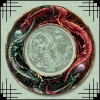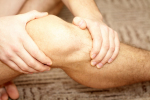- FreeTrainers.com Forums
- Injuries & Rehabilitation
- Spina bifida occulta
Group: Injuries & Rehabilitation
Created: 2012/01/01,
Members: 56,
Messages: 4466
Dealing with injuries and learning how to avoid them is extremely important!
Join group
Spina bifida occulta

Xia
Posts:
28
Joined: 2002/02/10  |
2002/03/09, 11:03 AM
anyone have spina bifida occulta?? Any tips i should know of , exercises, ...? |
|
| |

Alorle
Posts:
196
Joined: 2001/10/07  |
2002/03/10, 10:17 PM
Sorry, can't help you. My son has hydrocephalus, luckily without spina bifida. There are many support groups on the internet that may be able to help you, or, you could speak to your doctor or a PT.-------------- "Do not try. Do. Or do not. There is no try" --Yoda |

festus1113
Posts:
73
Joined: 2002/02/22  |
2002/03/10, 11:35 PM
I agree, the doctor would probably be the most qualified to let you know exactly what you should be doing in the form of exercise! I wish you luck and admire your desire to become fit, it can only help!-------------- "Without the will, there's no way" Stan |

Arnold
Posts:
1,112
Joined: 2000/11/27  |
2002/03/13, 10:15 AM
.. here is some info I collected.. hope it helps:Spina Bifida Occulta This is a mild form of spina bifida which is very common. Estimates vary but between 5% and 10% of people may have spina bifida occulta. It must be emphasised that, for the vast majority of those affected, having spina bifida occulta is of no consequence whatsoever. Often people only become aware that they have spina bifida occulta after having a back x-ray for an unrelated problem. However, for a few (about 1 in 1,000) there can be associated problems. Why do some people have complications? The term 'spina bifida occulta' is, in fact, not one but two separate conditions which have completely different consequences. This leads to confusion when such a diagnosis is used without qualification. For the majority of people with spina bifida occulta it is a minor fault involving one vertebra in the lower back. The unfortunate use of this term for such a minor fault can lead to distress for the person concerned. However, it should be considered as insignificant, both for that person and his or her children. For a small number of people with spina bifida occulta the fault is more extensive. Either the split in the spine is bigger, or may involve two or more vertebrae. There may be visible signs on the skin such as a mole or naevus (birthmark), a dimple or sinus (hole), or a patch of hair. This type of spina bifida occulta is significant. There may be associated difficulties which may include the following: foot deformity, weakness and reduced sensation of the legs, change in hand function, bladder infections and incontinence and bowel problems. These problems arise because the spinal cord becomes tethered to the backbone. Often a child who is previously symptomless may experience difficulties during the rapid growth of adolescence. This is because the nerves of the spinal cord are stretched and the symptoms may become progressively worse. It is important to consult a GP, who, if appropriate, can refer to a neurosurgeon. Specialist scanning procedures such as MRI (magnetic resonance imaging) give a clear picture of the nerves and spinal column and the neurologist will be able to advise on the most appropriate treatment. People with spina bifida occulta and progressive (worsening) symptoms of a stretched or tethered spinal cord need to have an operation on their lower spine to release the tension in the spinal cord. This is often a fairly simple and effective procedure, but occasionally the operation is very complicated and involves a (2% - 5%) risk of failure. It is often possible to improve symptoms in the legs with this operation, but it is rare for bladder function to return to normal. The main purpose of a "detethering operation" is to stop any further deterioration in leg or bladder function and it is important that a neurosurgical assessment is made as early as possible after the onset of symptoms. The operation is probably best done by those neurosurgeons who have a special interest in the condition. What are the implications? For the vast majority of people with the non-significant form of spina bifida occulta there are no known complications and there is no higher risk of having children with spina bifida than there is in the general population. For those with the more complicated spina bifida occulta, there may be neurological problems which may or may not be present at birth and may be progressive. Those with significant spina bifida occulta have a higher risk, than the general population, of having children with spina bifida which could be cystica or occulta. This risk is between 2% and 4% and is the same risk that those with with spina bifida cystica have of passing on the disability. However, the risk of having a baby with spina bifida can be dramatically reduced by taking folic acid (a B-group vitamin). More information and advice If someone suspects that they have occult spina bifida and is experiencing any of the problems described above, they should ask their GP for referral to a neurologist who can investigate and advise about treatment. Women who know they have spina bifida occulta and are planning to have a baby can ask for a referral to a geneticist who will consider both the family history and individual medical circumstances and advise on the risk of having a baby with spina bifida. -------------- .o0 Arnold 0o...o0 theaustrianoak@hotmail.com 0o. |
